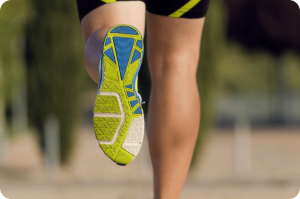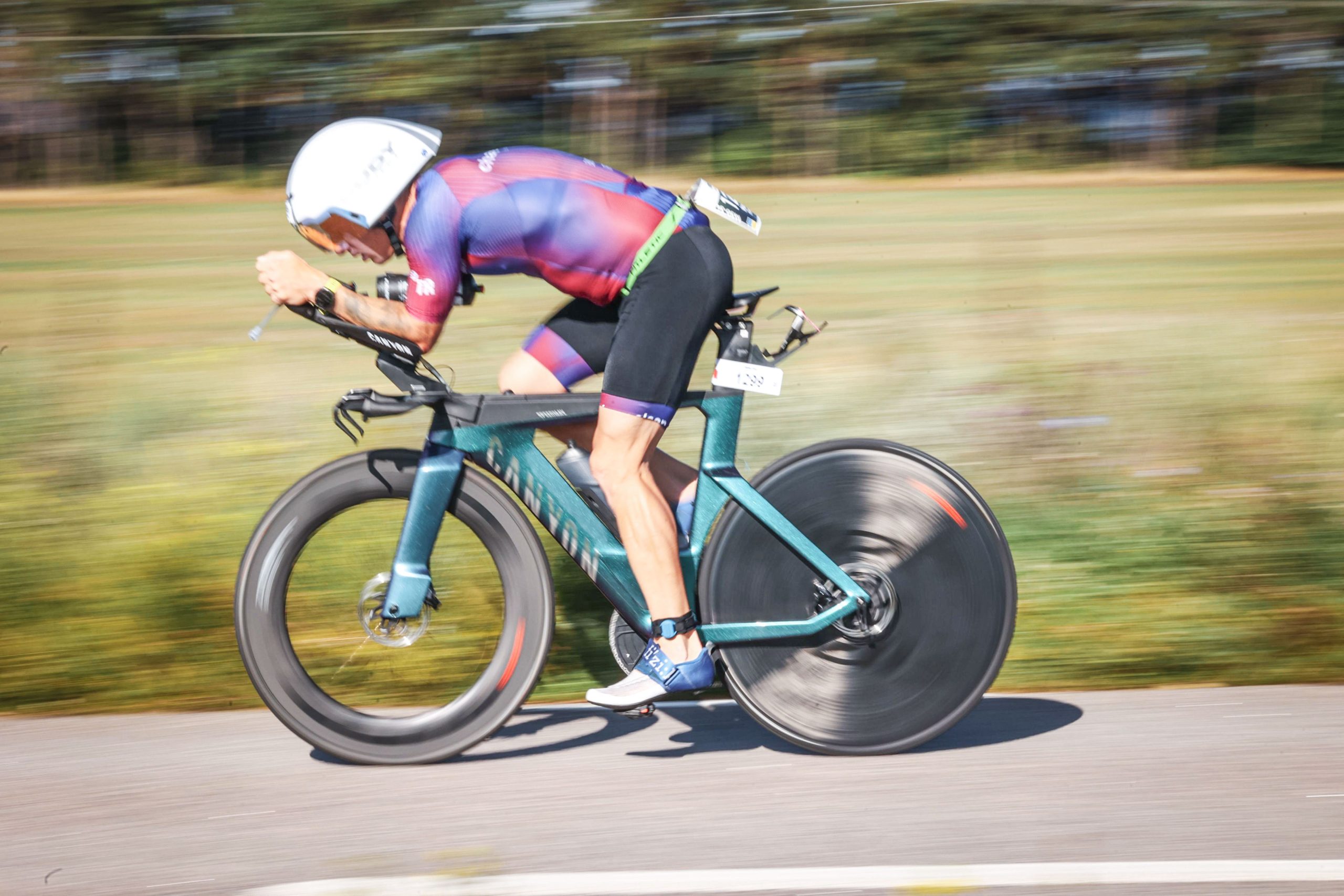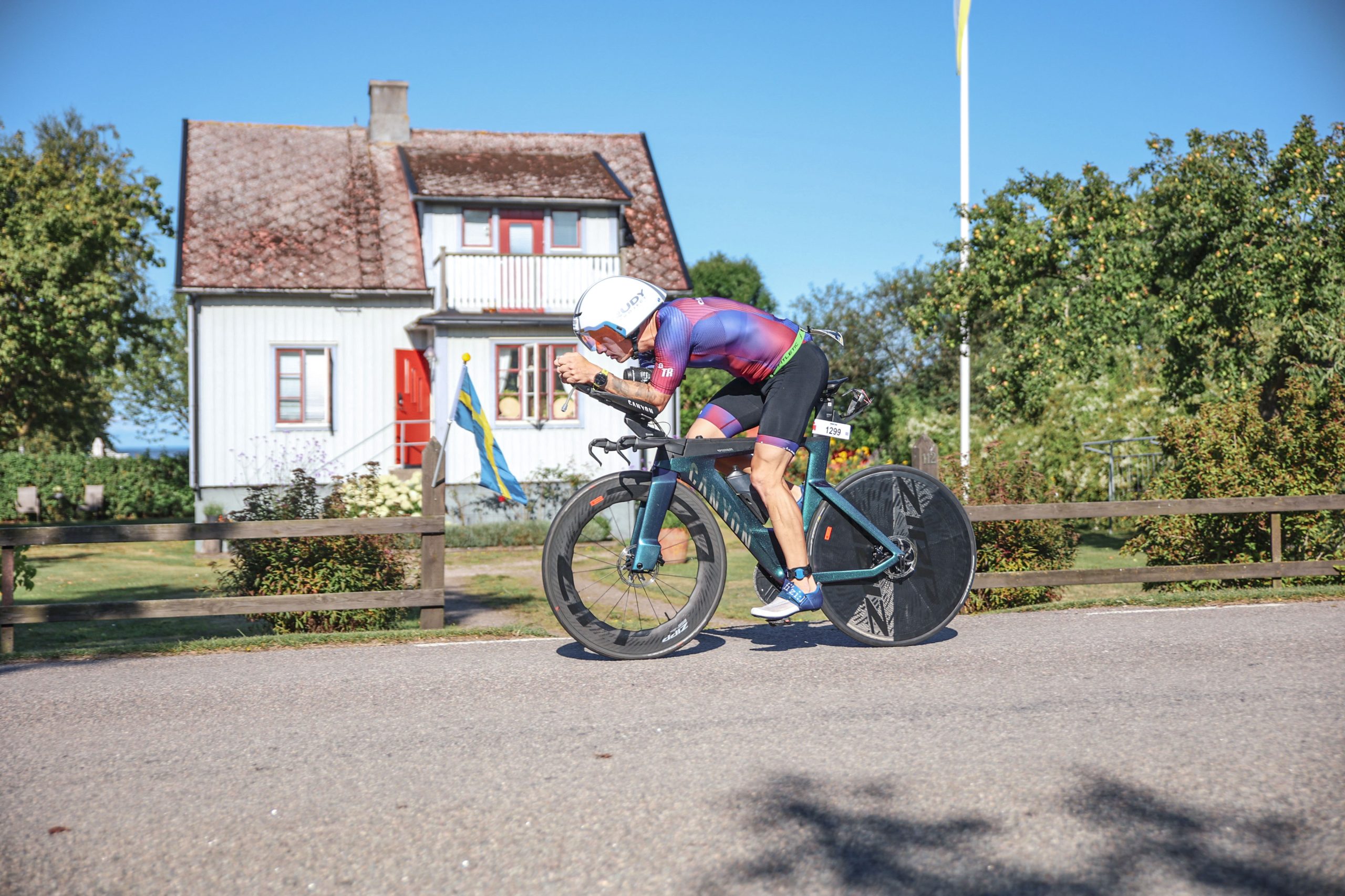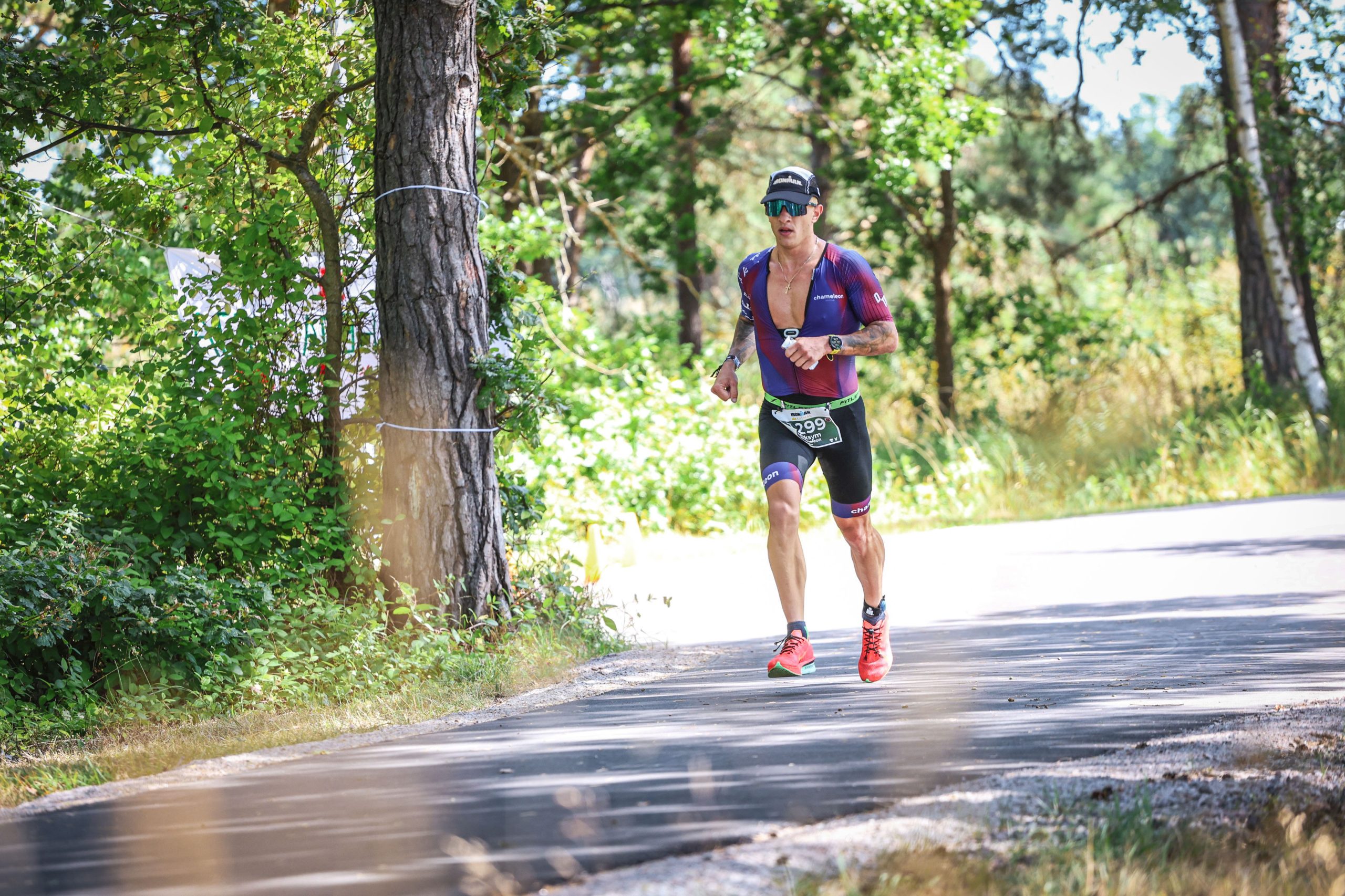A good pair of running shoes is one of the most important pieces of triathlon equipment.
In fact, choosing the right pair of shoes can be as complex as buying a more expensive kit, such as a perfect bike for triathlon.
Every runner is different, and requirements vary significantly; therefore, don’t just buy the nice-looking pair or the one your mate likes.
It is important to buy the shoes that are right for you because the wrong pair could lead to injury after many miles in them.
Here is how to choose running shoes for improved running performance, comfort, and injury prevention.
Understanding Your Running Needs
First of all, remember that what works for one runner may not necessarily work for another.
So don’t impulsively head out to buy a pair of running shoes just because you like the look of them or your friend has recommended them to you.
The best thing you can do is to go to the local running shoe store to get your gait analyzed.
Gait is a set of actions/reactions a foot performs when moving to support, cushion, and balance.
Or, if you have a pair of well-used running shoes, you can check the wear patterns on the soles to see how you pronate and what shoes are suited for you.
There are three main types of pronation: neutral, overpronation, and supination.
Neutral pronation is when the weight is centralized down the middle of the ball of the foot.
This pronation is considered the most biomechanically sound as everything tracks and rolls out in a straight, forward motion.
Overpronation is easily identified by slightly more wear on the inside edge of the shoe. It is very common and is caused by the arch of the foot collapsing inward, or, in some cases, even being flat-footed.
This ends up leaving it rolling in motion as you run.
If you find you have slightly more wear down the outer edge of the shoe, it is likely that you supinate.
It is generally caused by having a high arch, which means you have a particularly defined and rigid arch. This causes you to roll through and off on the outer edge of your shoe.
So, let’s take a look at the different types of shoes to suit those types of pronation.
Types of Running Shoes
The first type is a neutral shoe. It is a good fit for both neutral and supinating runners. It provides a bit of shock absorption and a little medial support.
So, they are essentially designed to roll through in a nice, neutral motion. And if you do supinate, these won’t add any more unnecessary control or stability.
Now, there is a stability shoe that is great for someone who overpronates.
Stability shoes normally include a firm area around the arch side for support and to provide higher stability to control the motion of the foot as it rolls through.
If you have severe overpronation or flat feet, you want something with slightly greater control to stop the arch from collapsing so much.
Such as a motion control shoe. This is essentially a beefed-up version of a stability shoe, and it just provides a little bit more support around the arch area.
Now, let’s talk about cushioning.
The well-cushioned shoe is great for absorbing impact. It is perfect for your everyday training miles.
They are a bit heavier, but they do help to keep you injury-free.
Then, we have a lightweight racing flat shoe with minimal cushioning. They are good for 5k and 10k races where every gram of weight on your legs matters.
However, that might depend on the runner. For example, you might want to wear more cushioned shoes in your 5 K race rather than lightweight ones.
Over time, your shoes begin to lose their cushioning, meaning you begin to absorb the impact more.
Generally, running shoes have around 300 to 400 miles in them, and the lighter the shoe, the less that is.
For example, race flat shoes will serve you best for about one season of regular triathlon training before you need to replace them.
Road Shoes Versus Trail Shoes
Road shoes are designed for flat and smooth surfaces and are not really a great choice for loose, slippery surfaces or mud.
That’s where the trail shoes come in.
They generally have a bit more tread and a slightly more jagged design to the sole to improve traction and grip.
And a trail running shoe can have a reinforced upper to deal with training conditions and terrain.
They are well-suited for those who enjoy off-road multi-sports events.
General Tips for Choosing the Right Running Shoe:
- Determine your running style, terrain, and personal preferences to choose the right running shoes.
- Consider your foot shape and whether you need a neutral shoe or a shoe with more support.
- Think about the distance you’ll be running and the type of surface you’ll be on.
- Consider your gait and pronation when choosing a running shoe.
- Look for shoes with features such as energy return, heel-to-toe drop, and a wider toe box.
- Consider the type of terrain you’ll be running on and choose shoes that provide the necessary support and protection.
- Think about your running goals and the type of runs you’ll be doing, such as base running training, easy, long-distance runs, or faster, more intense workouts.
- Check the shoe’s weight, heel cushioning, and fit to ensure it meets your needs.
Best Running Shoes Picks for Specific Needs
Choosing a pair of new running shoes is an entire adventure for a runner. There are thousands of models available, making a choice even harder.
To make your life just a little bit easier, we have created this list of the best running shoes you can choose from.
But don’t just take our word for granted.
When compiling this list, we used the ratings from Run Repeat, one of the most trusted resources where people leave their honest reviews on all things sports shoes: road running shoes, trail running shoes, cross-training shoes, etc.
Nike Pegasus 41
Run Repeat Score: 88%
Nike shoes are considered to be one of the best for running purposes. So, no list of the best running shoes can be full without one or two pairs of Nikes.
The Nike Pegasus 41 is a versatile daily trainer known for its blend of comfort, responsiveness, and durability.
It features a React foam midsole that provides a soft yet responsive cushioning that adapts to your stride, making it ideal for a variety of running distances.
The engineered mesh upper offers a breathable, secure fit, while the Flywire cables lock your foot in place for added support.
The shoe’s rubber outsole with a waffle pattern ensures excellent traction and durability whether you’re running on roads, tracks, or even light trails.
The Pegasus 41 feels lightweight yet cushioned, offering a balanced ride that suits both speed workouts and longer runs.
It remains one of Nike’s most popular shoes for its consistency and overall performance.
However, some runners may find it a bit too firm for their liking, especially when compared to other plush shoes.
Characteristics:
- React foam midsole for responsive and cushioned support
- Flywire cables provide additional foot support
- Engineered mesh upper for breathability and comfort
- Waffle-patterned rubber outsole for traction and durability
- Ideal for versatile running sessions, from speedwork to long runs
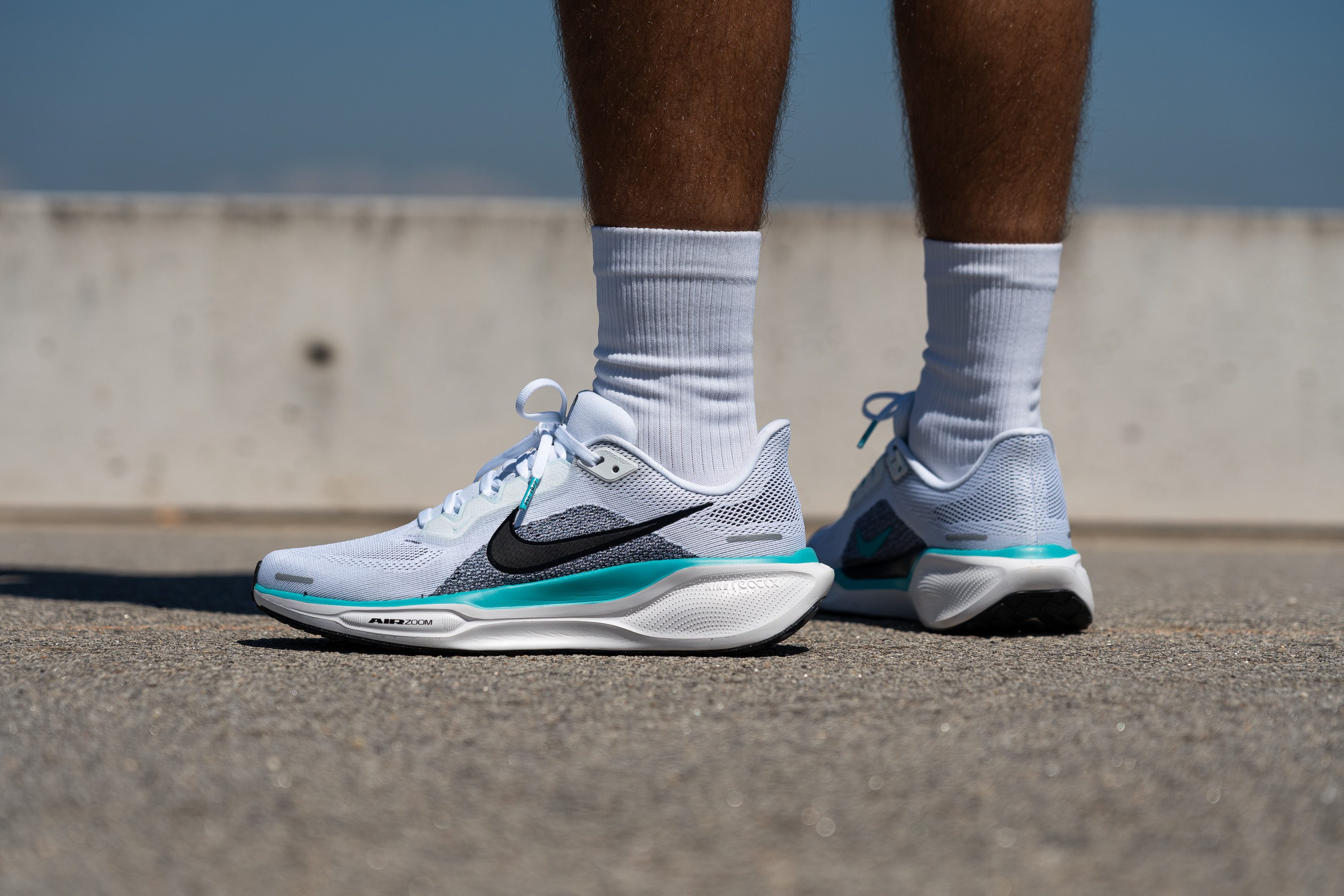
Asics Gel-Kayano 31
Run Repeat Score: 91%
The Asics Gel-Kayano 31 is a stability running shoe that offers exceptional support and cushioning, making it ideal for overpronators or those seeking extra stability in their runs.
It features FF BLAST+ cushioning, which provides a soft yet responsive ride, while the Gel technology in the forefoot and heel ensures excellent shock absorption.
The Jacquard mesh upper is breathable and designed for a snug, comfortable fit.
The shoe’s DUOMAX midsole system helps with stability and structure, preventing excessive inward foot rolling during runs.
The AHAR rubber outsole offers durability and traction, making the Gel-Kayano 31 suitable for various road conditions.
It’s a great option for long-distance runners who need a reliable, supportive shoe, but those who prefer a lighter, more neutral shoe might find it a bit bulky.
Characteristics:
- FF BLAST+ cushioning offers a responsive and plush ride
- Gel technology provides excellent shock absorption in the forefoot and heel
- DUOMAX midsole system offers stability for overpronators
- Jacquard mesh upper is breathable and offers a snug fit
- Durable AHAR rubber outsole enhances traction
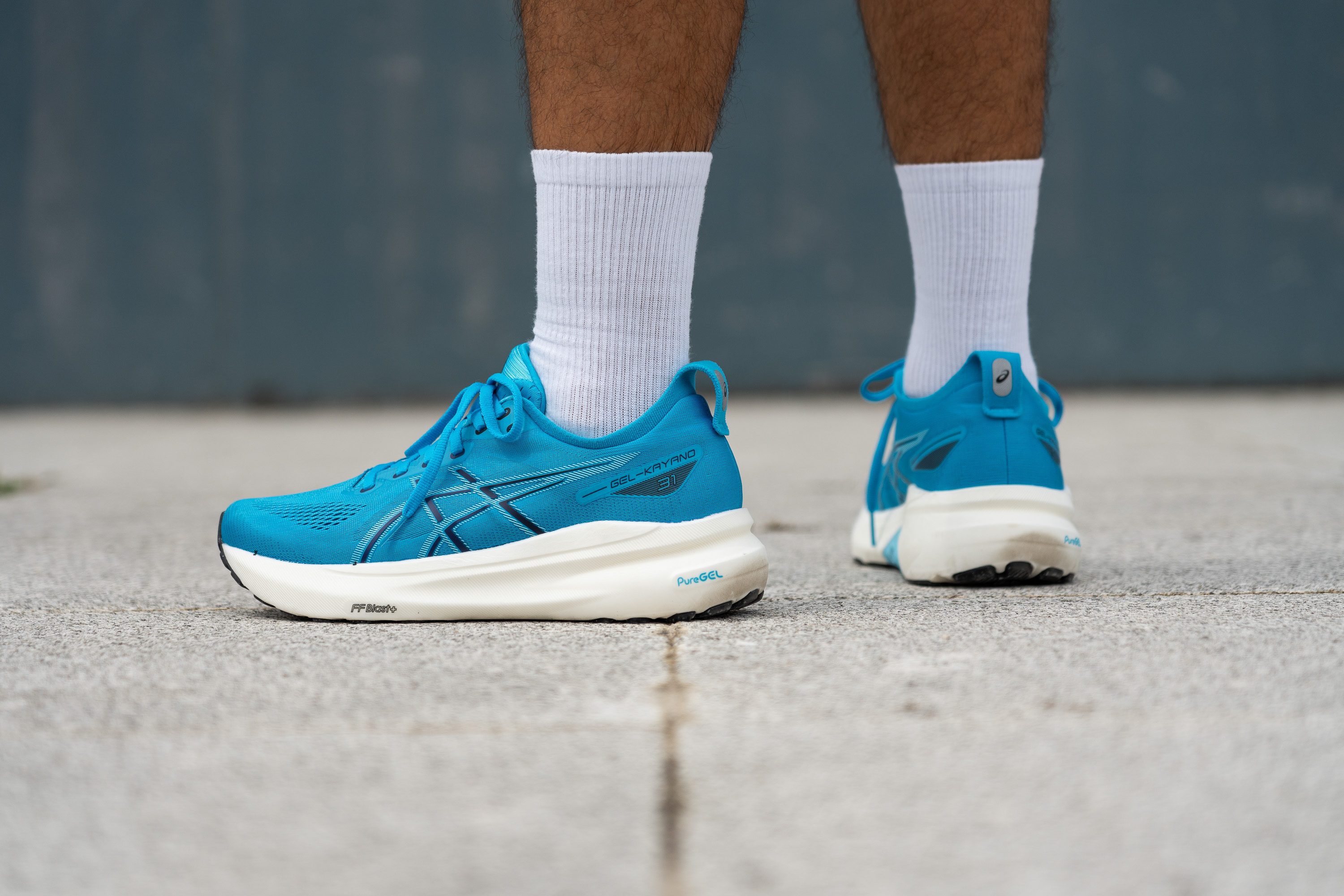
Saucony Peregrine 14
Run Repeat Score: 89%
The Saucony Peregrine 14 is a versatile trail running shoe built for rugged terrain and all-weather conditions.
With its PWRRUN cushioning, it offers a solid balance of comfort and responsiveness, making it perfect for both short sprints and long trail runs.
The updated PWRTRAC outsole is designed for superior grip, allowing you to confidently navigate slippery, rocky, or muddy trails without worrying about traction.
The engineered mesh upper provides a snug, breathable fit, while the reinforced toe cap adds extra protection against rocks and roots.
The Peregrine 14 feels more stable and responsive compared to previous versions, with a lower stack height for a better ground feel. However, it’s still plush enough to keep your feet comfortable over long distances.
If you’re a trail runner seeking a shoe that combines durability, grip, and comfort, the Peregrine 14 is a solid choice.
Characteristics:
- PWRRUN cushioning offers comfort and responsiveness
- PWRTRAC outsole provides superior traction on rugged terrain
- Engineered mesh upper for a breathable and secure fit
- Reinforced toe cap for added protection against trail obstacles
- Great for technical trails and mixed terrain
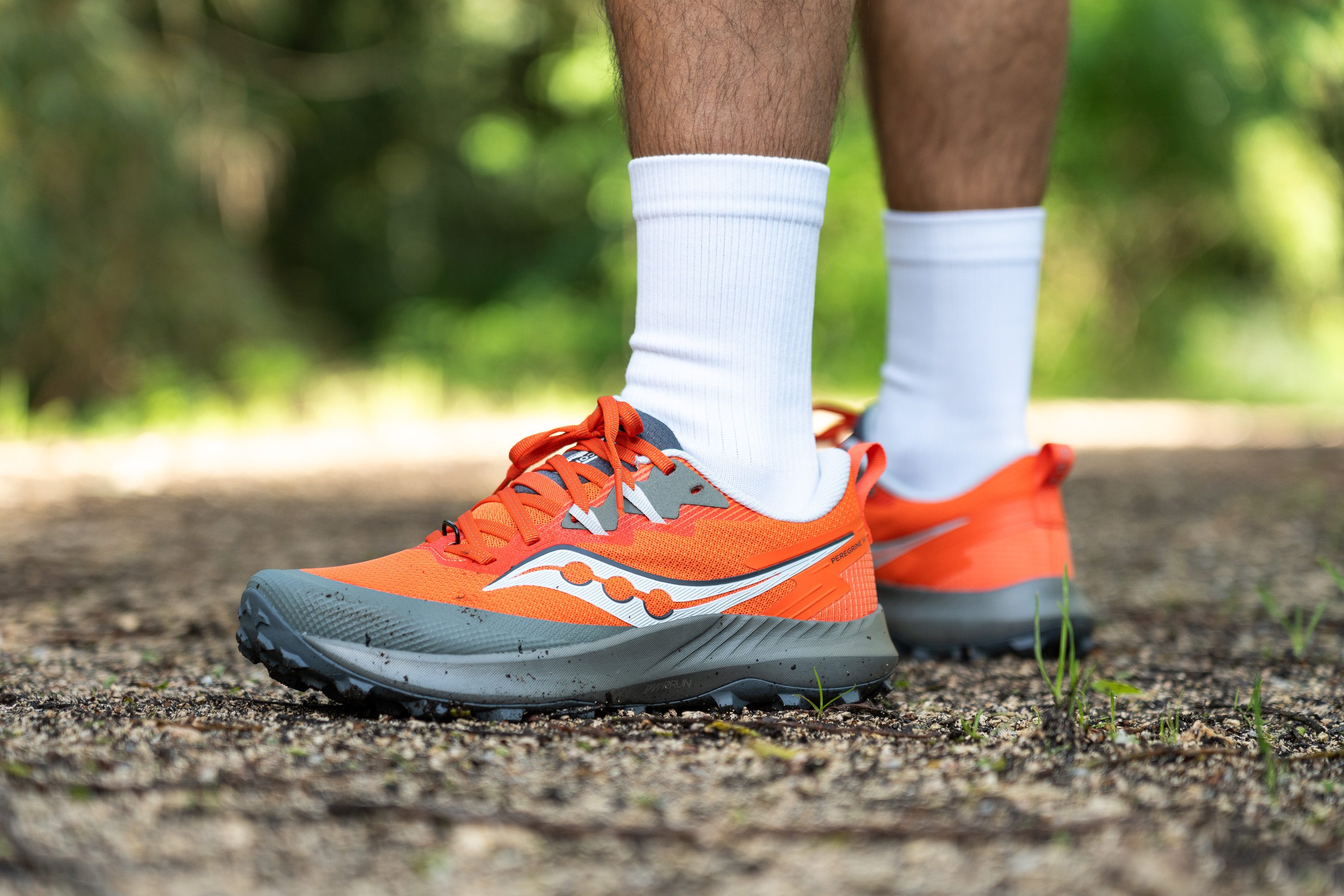
Adidas Ultraboost 5X
Run Repeat Score: 90%
The Adidas Ultraboost 5X is a refined version of the popular Ultraboost line, designed for runners seeking both comfort and performance.
It features Boost cushioning that provides a soft, responsive ride that absorbs impact while offering great energy return.
The Primeknit upper adapts to your foot’s shape, delivering a sock-like, snug fit with excellent breathability.
The Stretchweb outsole paired with Continental rubber enhances traction and durability. This model is suitable for various surfaces, both indoors and outdoors.
The revised midsole is a bit more responsive than previous Ultraboost models, providing a smoother transition from heel to toe.
While it’s known for being incredibly comfortable, the shoe’s bulkier build may not appeal to those looking for a more lightweight or speed-focused option.
Overall, the Ultraboost 5X remains an excellent choice for everyday runners who want a cushioned, comfortable ride with solid durability.
Characteristics:
- Boost cushioning for maximum comfort and energy return
- Primeknit upper offers a flexible, breathable, and secure fit
- Stretchweb outsole with Continental rubber for durable traction
- Refined midsole for smoother transitions
- Great for long runs and recovery days
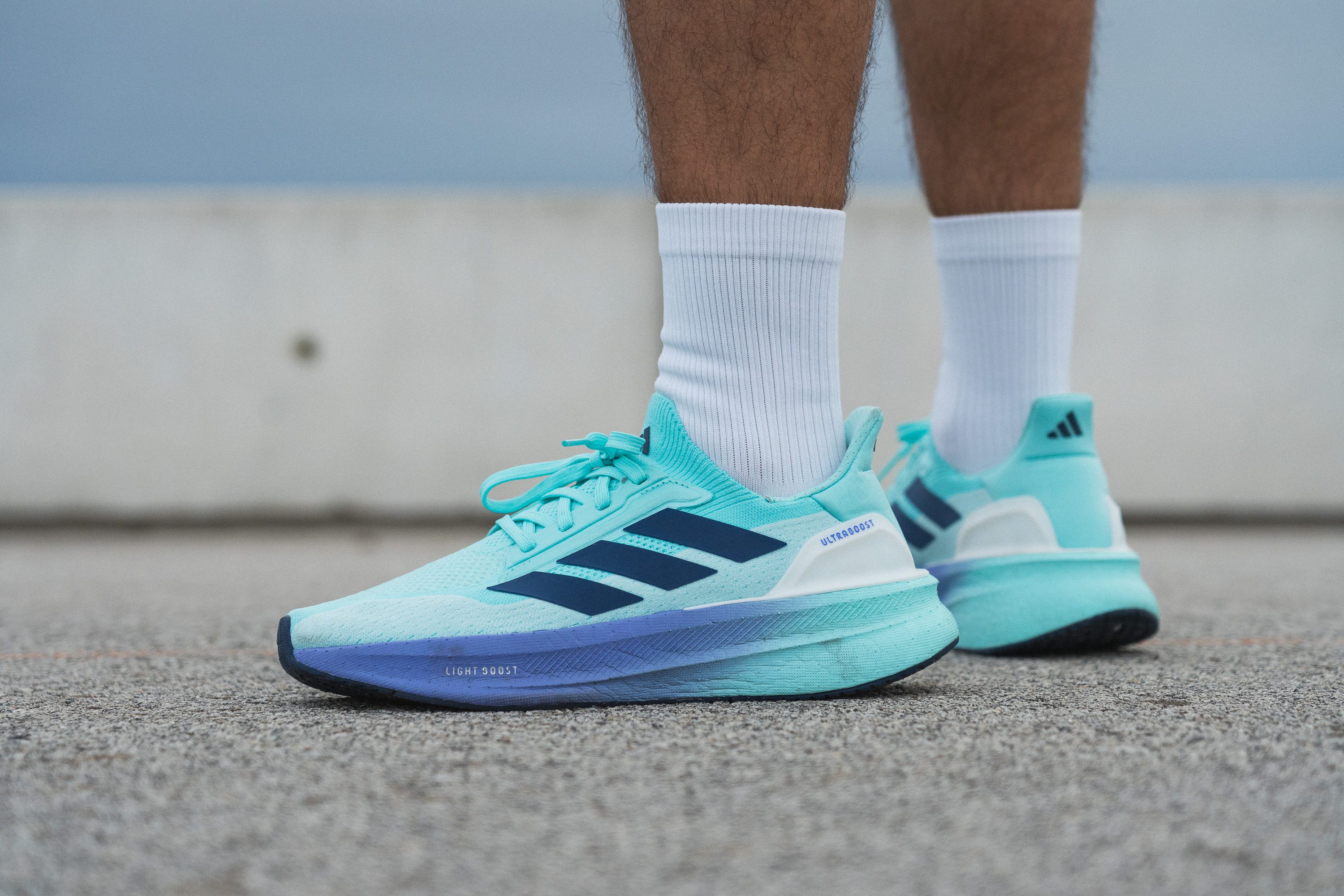
Hoka Skyflow
Run Repeat Score: 89%
The Hoka Skyflow is a lightweight, cushioned running shoe designed for those who prioritize comfort and versatility.
It features Hoka’s signature foam midsole, offering ample cushioning without sacrificing responsiveness, providing a smooth, soft ride that helps absorb impact on both short and long runs.
The engineered mesh upper ensures a breathable and flexible fit, and the shoe’s Meta-Rocker geometry encourages a smooth heel-to-toe transition, making each stride feel effortless.
The durable rubber outsole provides good traction on roads and light trails, though it may not be as aggressive as trail-specific models.
The Skyflow is ideal for runners looking for a well-cushioned, everyday trainer with a responsive feel but without the bulkiness of a maximalist shoe.
While it’s softer than some shoes, its lightweight construction ensures it doesn’t feel too sluggish, even on faster-paced runs.
Characteristics:
- Signature foam midsole for soft, responsive cushioning
- Meta-Rocker geometry promotes smooth transitions
- Engineered mesh upper for a breathable and flexible fit
- Durable rubber outsole for road and light trail running
- Lightweight design with plenty of cushioning
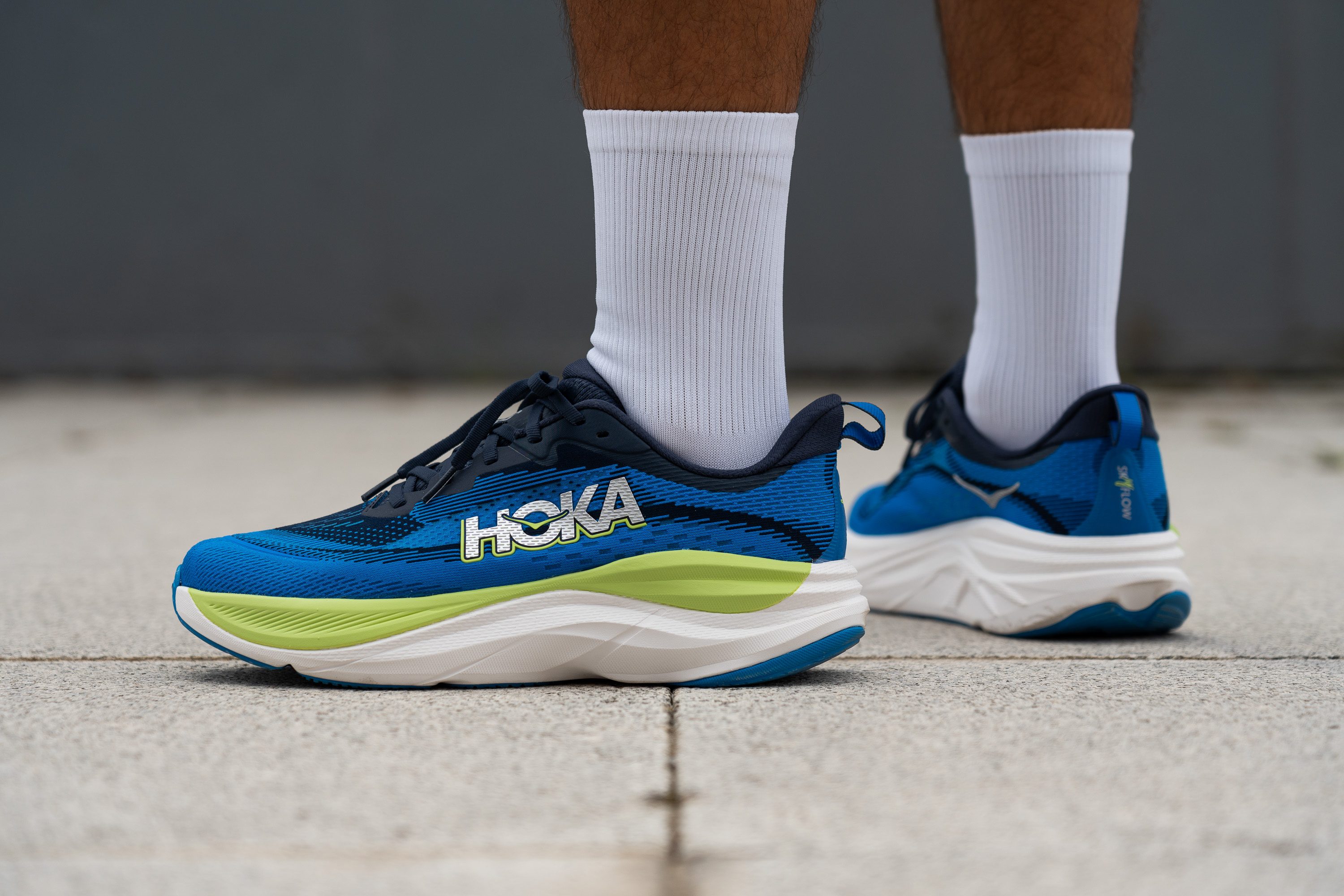
On Cloudmonster
Run Repeat Score: 91%
The On Cloudmonster is a highly cushioned, responsive running shoe designed to provide a smooth yet energetic ride.
Featuring On’s signature CloudTec cushioning system, it delivers a plush landing with a bouncy toe-off, ideal for those who prefer a cushioned feel without sacrificing responsiveness.
The dual-layer mesh upper offers a breathable, comfortable fit, while the CloudTec pods in the sole provide added stability and grip with each stride.
It’s designed to help with both daily training and recovery runs, providing ample cushioning for longer distances.
While it feels soft underfoot, the shoe maintains a surprisingly agile feel, making it a versatile choice. However, the high cushioning might not appeal to those who prefer a firmer ride.
Overall, the Cloudmonster is a great pick for runners looking for a soft, high-energy shoe that offers comfort for longer runs without feeling sluggish.
Characteristics:
- CloudTec cushioning for a soft yet responsive feel
- Dual-layer mesh upper for breathable comfort and fit
- High energy return with a bouncy, smooth transition
- CloudTec pods enhance stability and traction
- Ideal for longer runs and recovery days
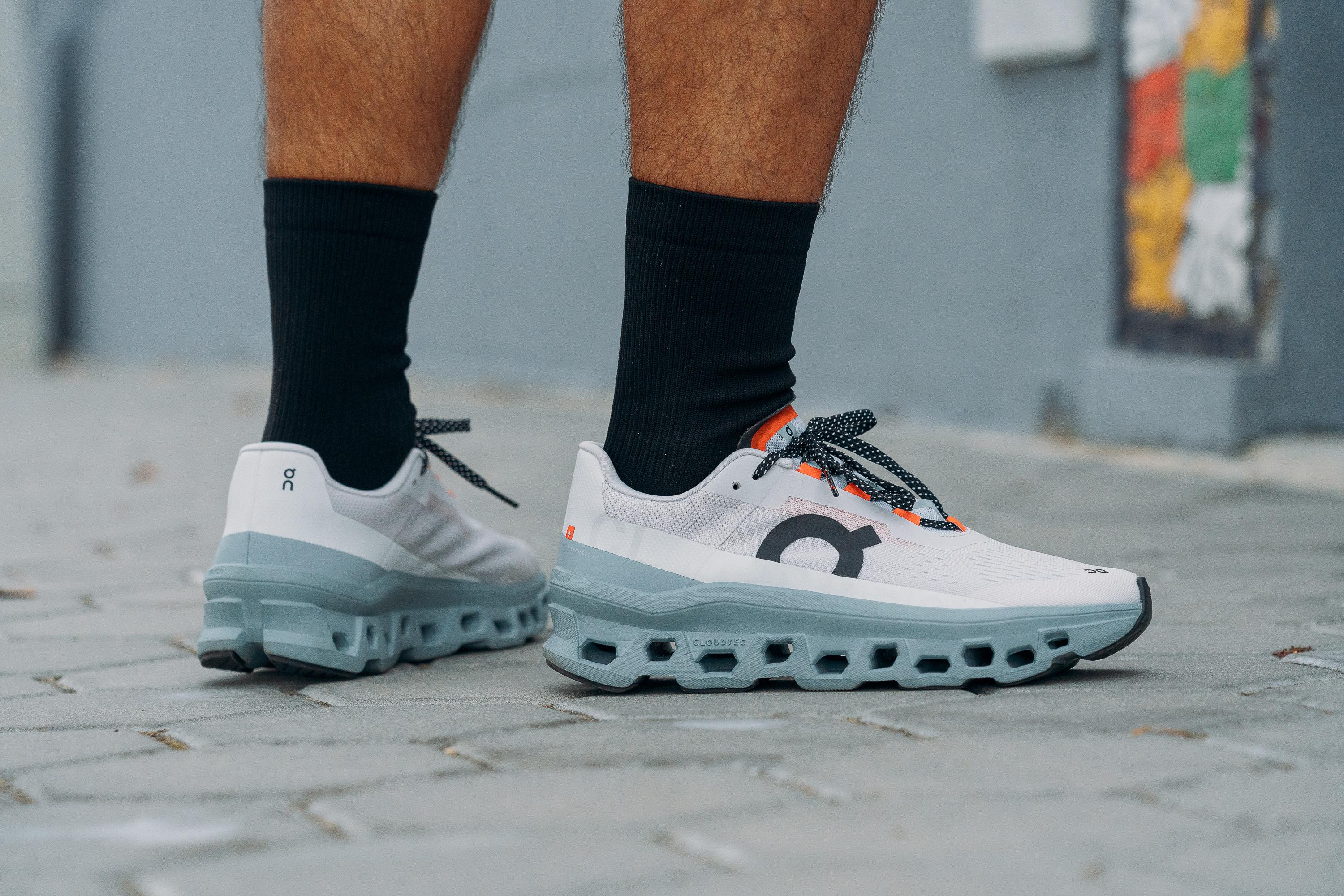
Saucony Triumph 22
Run Repeat Score: 89%
The Saucony Triumph 22 is a plush, high-cushion running shoe designed for maximum comfort on long runs.
It features PWRRUN PB foam, which provides a soft, bouncy, and responsive ride while keeping the shoe surprisingly lightweight.
The engineered mesh upper offers a secure yet breathable fit, wrapping the foot comfortably without feeling too snug.
Saucony has refined the midsole geometry, improving stability while maintaining a smooth and natural transition from heel to toe.
The XT-900 rubber outsole adds durability and reliable traction, making it a solid option for both pavement and treadmill running.
Compared to the previous version, the Triumph 22 feels even softer and more responsive, making it a great choice for those who prioritize cushioning.
Characteristics:
- Luxuriously soft and bouncy cushioning with PWRRUN PB foam
- Breathable engineered mesh upper for a secure, comfortable fit
- Smooth, stable ride with refined midsole geometry
- Durable XT-900 rubber outsole for solid traction
- Ideal for long-distance running and recovery days
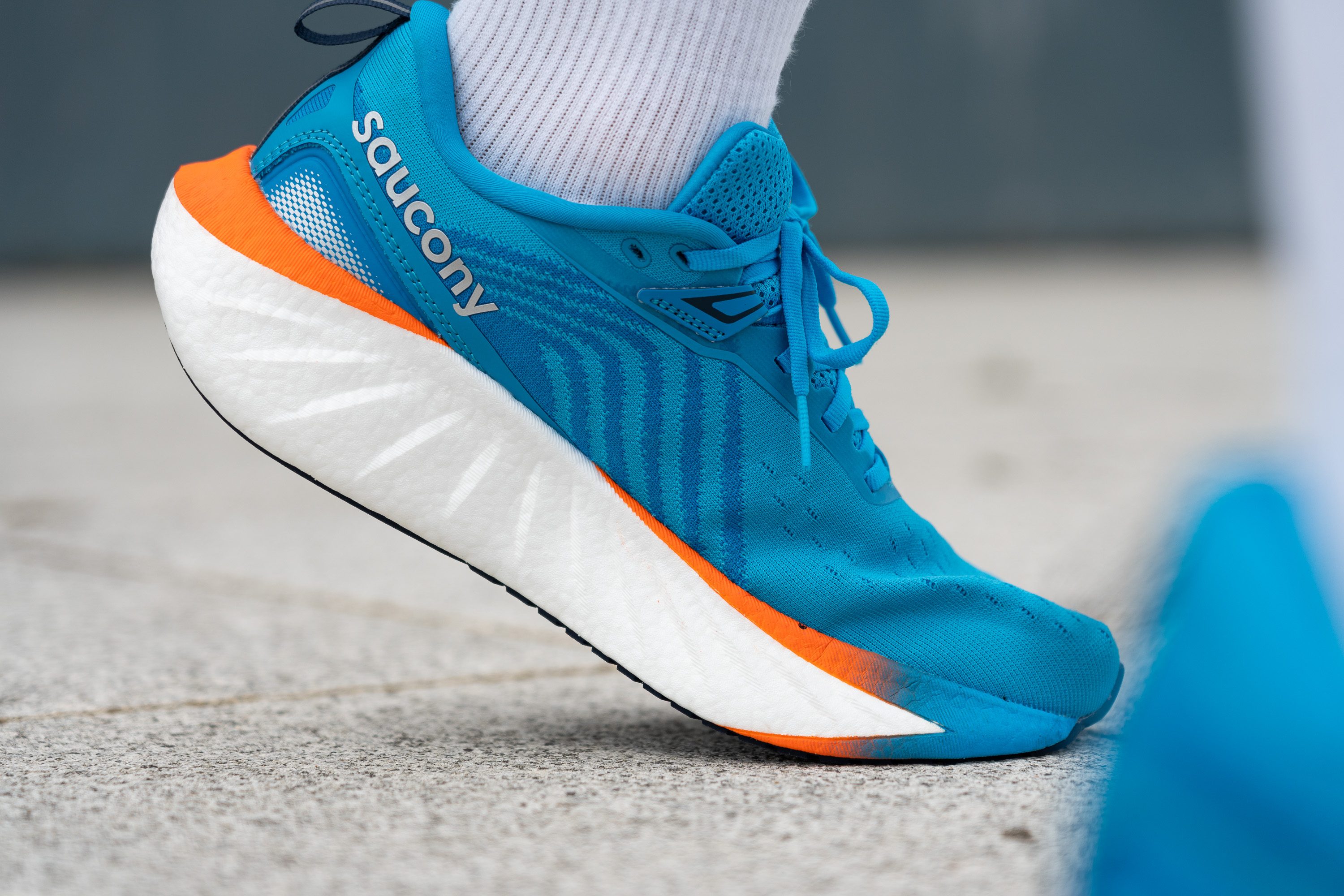
ASICS Novablast 5
Run Repeat Score: 93%
The ASICS Novablast 5 is a high-energy, cushioned running shoe built for comfort and bounce.
It features FF BLAST+ ECO foam, which delivers a soft yet responsive ride, making it a great choice for daily training and long runs.
The updated engineered mesh upper is lightweight and breathable, providing a secure fit without feeling restrictive.
ASICS has refined the geometry of the midsole, improving stability while maintaining the shoe’s signature trampoline-like bounce.
The AHAR rubber outsole offers solid grip and durability, even on wet roads.
Compared to previous versions, the Novablast 5 is lighter and more stable, making it feel faster while still absorbing impact well.
Some runners might find the fit slightly snug in the midfoot, but overall, this shoe is a great pick for anyone who loves plush yet energetic adventures.
Characteristics:
- Super bouncy and soft cushioning with FF BLAST+ ECO foam
- Lightweight and breathable mesh upper for a comfortable fit
- Stable yet energetic ride, great for long runs and daily training
- Durable AHAR rubber outsole provides great traction
- Refined geometry for a smoother, more stable transition
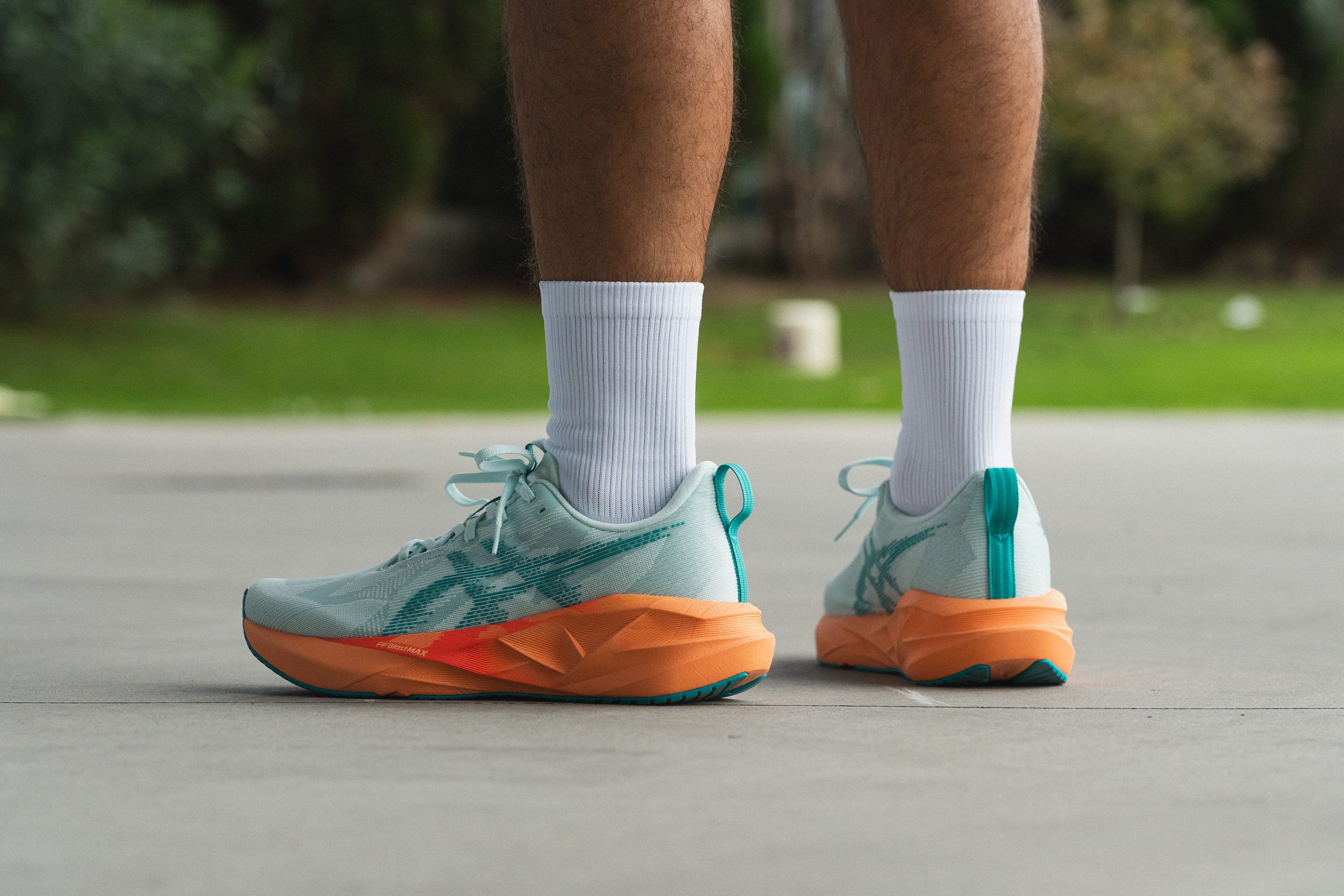
PUMA Deviate Nitro 3
Run Repeat Score: 89%
The PUMA Deviate Nitro 3 is a smooth, responsive running shoe that works just as well for daily training as it does for race day.
Thanks to its Nitro Elite foam, the ride feels light and bouncy and offers the right mix of softness and energy return.
The PWRPLATE carbon-fiber composite plate adds extra propulsion, helping you pick up the pace effortlessly.
A breathable mesh upper keeps your feet comfortable, while the PUMAGRIP outsole provides solid traction on roads and light trails.
It’s noticeably lighter and more stable than the previous version, making it a great option for runners who want speed without sacrificing comfort. The heel collar can feel a bit stiff at first, so some break-in time might be needed.
Overall, it’s a well-balanced shoe that delivers a fun, fast ride for everything from tempo runs to long distances.
Characteristics:
- Light and bouncy ride with Nitro Elite foam
- Propulsive carbon-fiber plate for smoother transitions
- Breathable mesh upper keeps your feet cool
- Durable grip on different surfaces with PUMAGRIP rubber
- Great for both training and race day
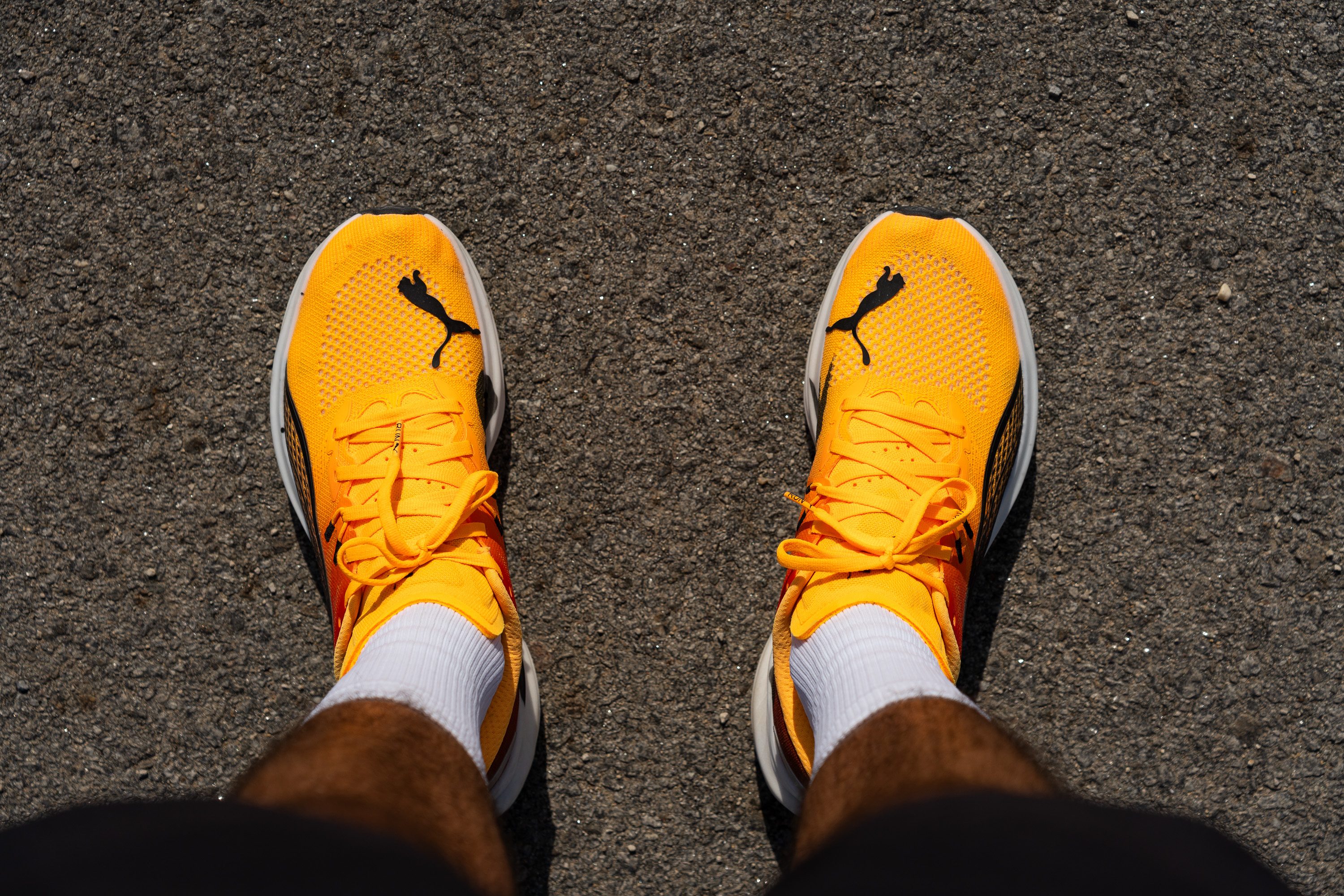
Adidas Adizero EVO SL
Run Repeat Score: 94%
The Adidas Adizero EVO SL is an ultra-lightweight running shoe designed for speed and performance.
Featuring a Lightstrike Pro midsole, it offers a responsive and energetic ride, making it ideal for tempo runs and race day.
The breathable mesh upper provides a snug yet comfortable fit, ensuring excellent ventilation.
With a durable Continental rubber outsole, it delivers reliable traction on both dry and wet surfaces.
Overall, it’s a great option for those looking to maximize speed without unnecessary weight.
Characteristics:
- Weight: Extremely lightweight for a racing feel
- Midsole: Lightstrike Pro for responsiveness
- Upper: Breathable mesh for ventilation and a snug fit
- Outsole: Continental rubber for excellent traction
- Cushioning: Minimal, focused on ground feel and speed
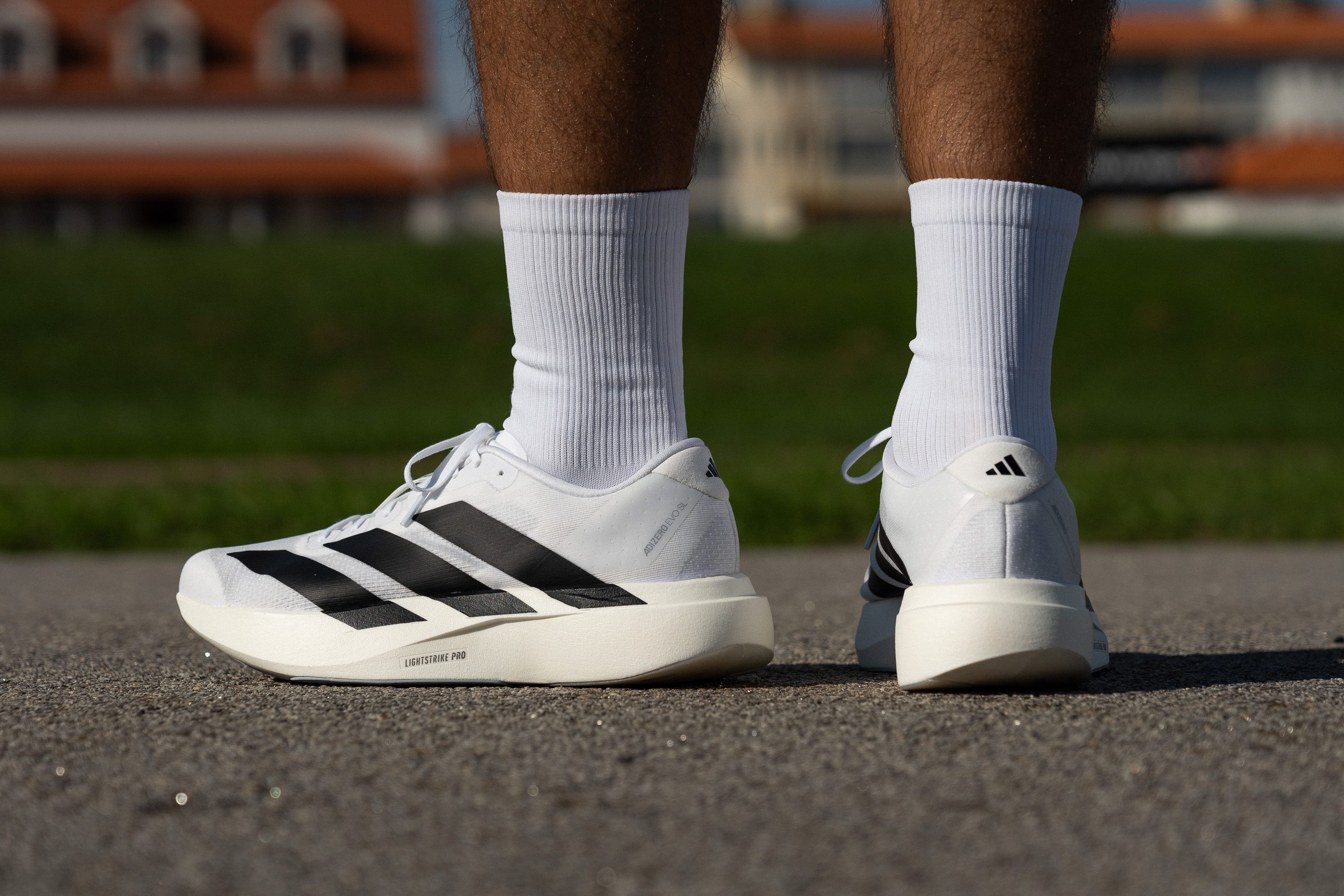
As a bonus, here are a few more models that are worth your attention:
- For everyday training shoes, consider the Nike Pegasus or the Asics Gel-Nimbus.
- For tempo runs and racing, consider the Brooks Hyperion Tempo or the Saucony Endorphin Speed.
- For long runs and recovery, consider the Hoka One One Clifton 9 or the Nike Invincible 3.
- For trail running, consider the Saucony Peregrine 14 or the Hoka Challenger ATR 6.
These were the top ten shoes for running we have explored. However, there are many other great pairs that we haven’t mentioned.
So, do your research, read reviews, and make your choice wisely.
Running Shoes and Performance
Can your new running shoes improve your performance?
Let’s get into it.
There are three determinants of running performance: VO2Max, lactate threshold, and running economy.
Of these, only the running economy appears to be affected by changes in shoes.
Running economy is the measure of efficiency or metabolic energy cost to run at a certain pace (learn more about metabolic testing for triathletes).
When you improve your running economy, you decrease the amount of energy expenditure used to run at a given pace.
Changes in running shoes have been reported to improve running economy and time trial performance by 6%, according to this study on the effects of running shoe construction on performance in long distance running.
They name four major shoe features that contribute to this:
Shoe weight
Multiple studies have been reporting that decreasing shoe weight by 100 grams improves running economy by around 1%.
Midsole material
The midsole material plays a huge role in how a running shoe feels and performs. Some foams are super soft and bouncy, making your runs feel effortless, while others are firmer and more stable, giving you better control.
For example, EVA foam is the most common — it’s lightweight and cushy but can wear out over time.
PEBA-based foams (like Nike’s ZoomX or Saucony’s PWRRUN PB) are insanely bouncy and great for race day.
TPU foams, like Adidas Boost, last longer and feel a bit more stable.
Then you have supercritical foams, which go through a high-tech process to make them extra light and responsive — Hoka and New Balance use these a lot.
Midsole cushioning
An increase in the midsole thickness not only allows the shoe to contain a greater amount of energy-resilient foam but also supports the addition of several other features that are considered to contribute to the increase in running economy. These are carbon fiber plates or rocker-bottom designs.
Longitudinal stiffness
The longitudinal bending stiffness of the shoe has shown mixed results in changing running economy with increased stiffness, resulting in less energy lost at the first MTP joint and conflicting effects at the ankle.
In summary, light shoes with a high density of resilient material and a stiff curved shape have been shown to improve running performance at the group level.
At the individual level, there may be some runners who benefit more than others from these shoe features.
So, when selecting your running shoes, take into account your foot and running style characteristics.
Can Wrong Running Shoes Cause Injuries?
Many runners believe that wearing the wrong shoes can cause running injuries.
However, there was no scientific evidence for it.
In fact, a systematic review of risk factors for overuse injuries in short- and long-distance running found no relationship between running shoes and the development of running injuries.
But, I should note that the research usually studies all running injuries together, so it is unknown if a certain type of running shoe is associated with specific running injuries.
Rather than thinking of running shoes as causative factors for injuries, Laurent Malisoux and Daniel Theisen proposed an effect modifier relationship.
What is this?
An effect modifier is a variable that can increase or decrease the strength of an existing relationship.
In this case, it has been suggested that while the runner’s training load is the largest contributor to causing injuries, running shoes can increase or decrease the amount needed to sustain that injury.
For example, minimalist shoes result in higher loads at the foot and ankle.
If a runner’s training includes qualities that also load the foot and ankle more (e.g. hill running workouts, speedwork) the minimalist shoes may contribute to overload that potentially causes injuries.
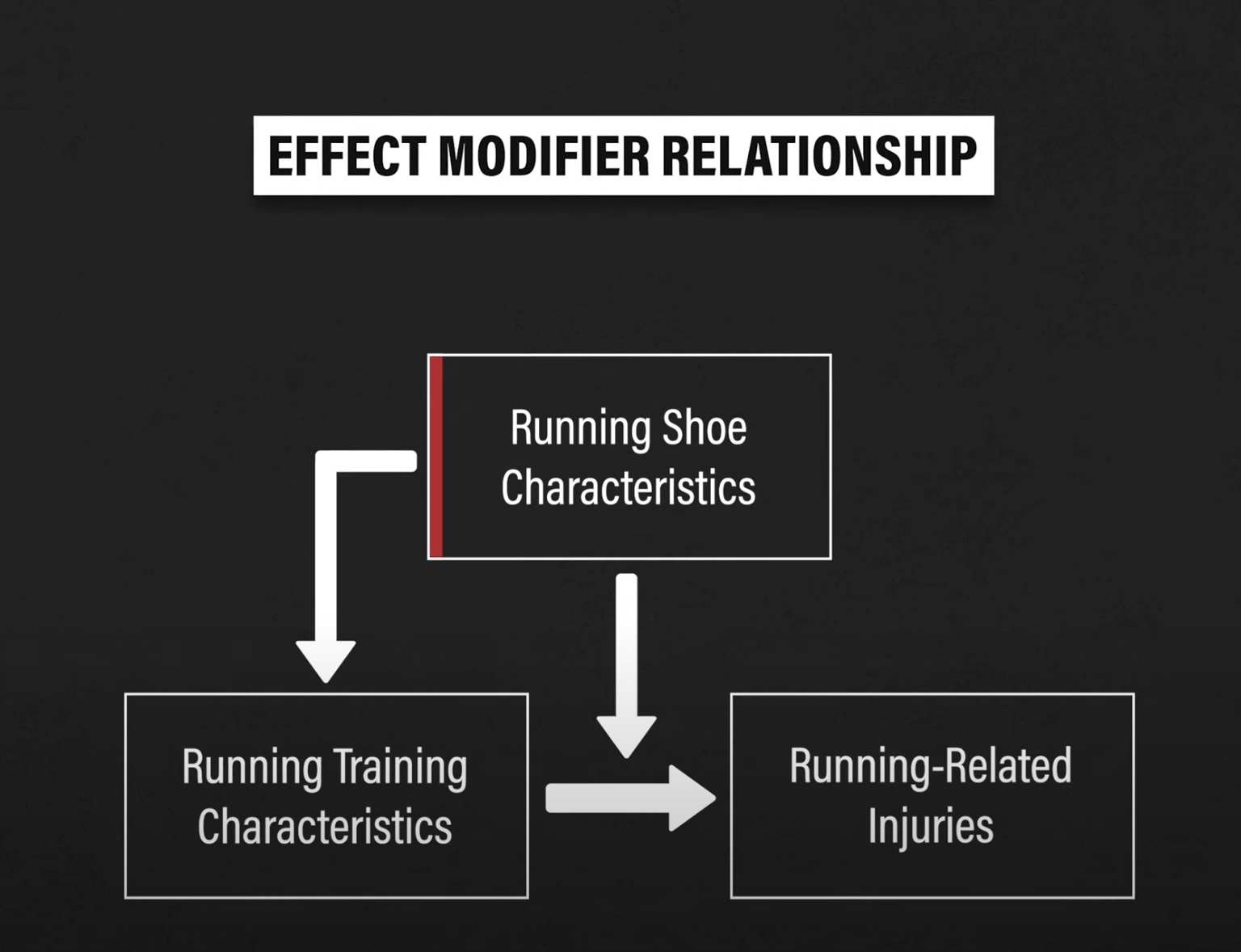
Can running shoes prevent injuries?
Based on the effect modifier model we’ve explored, running shoes are able to shift stress towards or away from certain areas of the body, but they have not been shown to prevent injuries.
Learn more about common triathlon injuries and the best strategies to prevent them.
Consider consulting with a running shoe expert or a podiatrist to get personalized recommendations.
Always check online reviews and ratings from other runners to get a sense of a shoe’s performance and comfort.
Take into account your running needs, foot shape, and personal preferences when selecting a shoe.
And don’t be afraid to try on multiple shoes and ask for expert advice to find the ideal running shoe for you.
